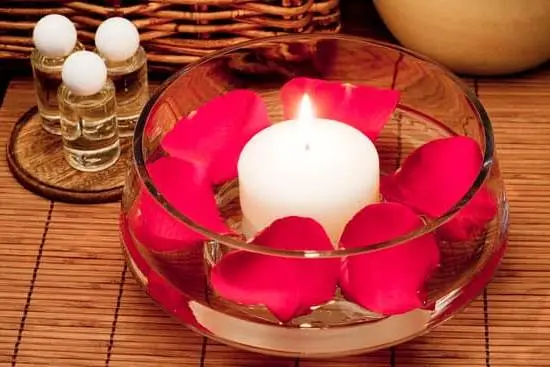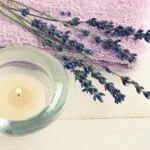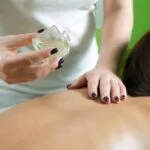Aromatherapy heating pads are a great way to combine the therapeutic benefits of herbs and essential oils with the soothing comfort of heat therapy. In this article, we will explore how to make these delightful heating pads using fresh herbs, providing you with a natural and aromatic way to relax and relieve pain.
By infusing your heating pad with the scents of lavender, peppermint, or other herbs, you can create a truly personalized aromatherapy experience that caters to your specific needs.
Aromatherapy heating pads offer a range of benefits, from reducing muscle tension and promoting relaxation to easing menstrual cramps and alleviating headaches. Additionally, using fresh herbs adds an extra layer of fragrance and therapeutic properties to the heating pad, enhancing its overall effectiveness. Whether you are looking for a natural remedy for stress relief or want to create a luxurious spa-like experience at home, aromatherapy heating pads can be a wonderful addition to your self-care routine.
By choosing the right combination of herbs and essential oils for your aromatherapy heating pad, you can tailor its aroma and benefits to suit your needs. In the following sections, we will guide you through the process of selecting the best herbs for your pad, preparing the fabric and filling it with natural materials, adding essential oils for enhanced aromatherapy effects, assembling the heating pad, and safely using it for relaxation and pain relief.
Get ready to embark on a journey of creating your own personalized aromatherapy heating pad filled with nature’s goodness.
Choosing the Right Herbs for Aromatherapy Heating Pads
When it comes to making aromatherapy heating pads using fresh herbs, choosing the right herbs is essential for creating a soothing and effective experience. There are various types of fresh herbs that can be used in aromatherapy heating pads, each with its own unique benefits and properties. Some popular options include lavender, chamomile, peppermint, eucalyptus, and rosemary.
Lavender is known for its calming and relaxing properties, making it an excellent choice for stress relief and promoting better sleep. Chamomile has similar calming effects and is often used to alleviate anxiety and promote relaxation. Peppermint and eucalyptus are great for relieving congestion and soothing sore muscles, while rosemary can help improve circulation and ease tension.
When choosing the right herbs for your aromatherapy heating pad, consider the specific benefits you are looking to achieve. Whether it’s relaxation, pain relief, or stress reduction, selecting the appropriate herbs will ensure that you get the most out of your heating pad experience.
To create a custom herb blend for your heating pad, consider mixing different fresh herbs together to create a unique aroma and therapeutic effect. For example, combining lavender with chamomile can enhance the relaxation properties of the pad, while blending peppermint with eucalyptus can provide refreshing relief for respiratory issues. Experimenting with different herb combinations allows you to tailor your aromatherapy heating pad to meet your specific needs and preferences.
Preparing the Fabric and Filling for the Heating Pad
When it comes to making aromatherapy heating pads using fresh herbs, the preparation of the fabric and filling is an essential step in creating a soothing and effective product. The right fabric and filling can make a significant difference in the overall experience and benefits of using the heating pad for relaxation and pain relief.
Choosing the Fabric
The first step in preparing an aromatherapy heating pad is selecting the right fabric. It’s important to choose a natural, breathable fabric like cotton or linen to ensure comfort during use. Organic fabric is also ideal for those looking to incorporate natural materials into their self-care routines. Additionally, selecting a soft and durable fabric will contribute to the overall quality and longevity of the heating pad.
Options for Filling
There are various options for filling an aromatherapy heating pad, each offering unique benefits. Common fillings include rice, flax seeds, dried beans, or cherry pits. When choosing a filling, consider factors such as heat retention, weight distribution, and moisture resistance. It’s essential to select a natural and non-toxic filling that can hold heat effectively without becoming damaged or overheated.
Sourcing High-Quality Materials
To ensure that your aromatherapy heating pad is of the highest quality, it’s crucial to source high-quality fabric and natural fillings. Look for reputable suppliers that offer organic and chemical-free materials for both the fabric and filling. Taking the time to select premium materials will ultimately enhance the effectiveness and durability of your homemade heating pads.
By carefully selecting the right fabric and filling for your aromatherapy heating pads, you can create a luxurious and therapeutic product that promotes relaxation and holistic wellness. Understanding how these elements contribute to the overall experience will allow you to craft personalized heating pads tailored to your specific needs.
Adding Essential Oils to the Herb-Filled Heating Pad
Once you have chosen and prepared your fabric and filled it with your selected fresh herbs, the next step in creating your aromatherapy heating pad is to add essential oils. Essential oils are potent plant extracts that can enhance the aroma and therapeutic benefits of your heating pad. They are a key component of aromatherapy, which uses natural scents to promote relaxation, relieve stress, and improve overall well-being.
When choosing essential oils for your herb-filled heating pad, it’s important to consider the specific benefits of each oil and how they complement the herbs you have selected. For example, lavender essential oil is known for its calming properties and can be paired with relaxing herbs like chamomile or rose petals. On the other hand, eucalyptus essential oil has a refreshing scent that works well with invigorating herbs like peppermint or citrus peels.
To add essential oils to your heating pad, you can either apply a few drops directly to the fabric before filling it or mix the oils with the dried herbs before filling. Be mindful of not adding too much oil as it can make the fabric greasy and may cause skin irritation during use. A good rule of thumb is to use 6-8 drops of essential oil per cup of dried herb mixture.
Incorporating essential oils into your herb-filled heating pad will not only enhance its aromatic experience but also provide additional therapeutic benefits for relaxation and pain relief.
| Essential Oil | Complementary Herbs |
|---|---|
| Lavender | Chamomile, Rose Petals |
| Eucalyptus | Peppermint, Citrus Peels |
Assembling the Aromatherapy Heating Pad
When it comes to creating your own aromatherapy heating pad using fresh herbs, the assembly process is a crucial step in ensuring that the pad is effective and safe to use. Here are some detailed instructions on how to assemble the heating pad with the herb and essential oil blend:
1. Gather Your Materials: Before starting the assembly process, make sure you have all the necessary materials at hand. This includes your prepared fabric for the heating pad, the chosen filling such as rice or flax seeds, your selected fresh herbs, and essential oils.
2. Layering the Ingredients: Start by placing a layer of your chosen filling on one half of the fabric, leaving some space around the edges for sealing. Then, sprinkle a generous amount of fresh herbs on top of the filling. The herbs will release their aroma when heated, providing a soothing and fragrant experience during use.
3. Adding Essential Oils: Next, add a few drops of your chosen essential oils onto the herb and filling mixture. This will enhance the aromatherapy experience and provide additional therapeutic benefits based on the properties of the selected oils.
4. Securing and Sealing: Carefully fold over the fabric to cover the herb, filling, and essential oil mixture. Use pins or clips to secure the edges before sewing them together with a needle and thread. Make sure to create a tight seal to prevent any leaks during use.
5. Testing for Leaks: Before heating and using your aromatherapy heating pad, it’s important to conduct a quick test for leaks by gently pressing down on different sections of the pad. If there are any weak spots or openings, reinforce them with additional stitching to ensure that no contents will spill out.
By following these steps for assembling your aromatherapy heating pad with fresh herbs and essential oils, you can create a customized and effective self-care tool for relaxation and pain relief.
Heating and Using the Aromatherapy Heating Pad
Heating the Aromatherapy Heating Pad
When it comes to heating your aromatherapy heating pad, there are a few different methods you can use. One common method is to heat the pad in the microwave for a short amount of time, typically around 1-2 minutes. This will allow the herbs and essential oils to release their therapeutic scents and provide warmth.
Another option is to place the heating pad in the oven at a low temperature for a short period of time. Be sure to follow specific instructions for heating based on the materials used in your heating pad.
Using the Aromatherapy Heating Pad
Once your aromatherapy heating pad has been heated, it’s important to use it safely and effectively. To use the pad for relaxation or pain relief, simply place it on the desired part of your body, such as your neck, shoulders, or lower back.
The warmth and herbal scents will work together to provide soothing comfort and relief. It’s recommended to use the heating pad in a comfortable and relaxed environment, allowing yourself time to fully benefit from its aromatherapeutic properties.
Tips for Using the Aromatherapy Heating Pad
To ensure that you get the most out of your aromatherapy heating pad experience, consider incorporating some additional tips into your routine. For example, taking deep breaths while using the heating pad can help maximize its calming effects. Additionally, setting aside dedicated time for using the heating pad as part of a relaxation or self-care routine can enhance its overall benefits. Remember that consistency is key when using aromatherapy heating pads for relaxation or pain relief.
By following these guidelines on how to make aromatherapy heating pads using fresh herbs and using them effectively, you can experience all of their soothing benefits whenever you need them most.
Caring for Your Aromatherapy Heating Pad
Once you have made your own aromatherapy heating pad using fresh herbs, it is important to understand how to care for it to ensure its longevity and effectiveness. These simple maintenance steps will help you get the most out of your handmade heating pad.
1. Cleaning the Heating Pad:
Regular cleaning is essential to prevent any build-up of dirt or oils on the fabric. Depending on the type of fabric used, you can either hand wash the heating pad in mild detergent or spot clean it with a gentle fabric cleaner. Make sure to thoroughly dry the heating pad before using it again.
2. Refreshing the Herb and Essential Oil Blend:
Over time, the scent of the fresh herbs and essential oils in your heating pad may diminish. To refresh the aroma, gently knead and crush the herb-filled pouch within the heating pad to release more fragrance. You can also add a few drops of your chosen essential oil onto a cotton ball and place it inside the pouch to enhance the scent.
3. Storing the Heating Pad:
Proper storage will help maintain the quality of your aromatherapy heating pad. Store it in a cool, dry place when not in use, and keep it away from direct sunlight or heat sources. This will prevent any deterioration of the fabric and herbs inside.
Making your own aromatherapy heating pads using fresh herbs is a rewarding and beneficial craft that can provide relief from stress and discomfort when used correctly. By following these guidelines for caring for your heating pad, you can continue to enjoy its therapeutic benefits for an extended period of time.
Additional Tips and Ideas for Aromatherapy Heating Pads
In conclusion, making your own aromatherapy heating pads using fresh herbs can be a wonderful and rewarding experience. Not only do these heating pads provide the benefits of relaxation and pain relief, but they also offer the therapeutic effects of the chosen herbs and essential oils.
By choosing the right herbs for your specific needs, preparing the fabric and filling with care, and assembling the heating pad thoughtfully, you can create a personalized self-care tool that brings comfort and well-being into your daily routine.
As you explore the world of aromatherapy heating pads, don’t be afraid to get creative with your blends and designs. Consider incorporating different combinations of fresh herbs and essential oils to create unique scents and experiences tailored to your preferences.
Additionally, think about customizing the shape and size of your heating pad to target specific areas of tension or discomfort in your body. Whether you need a smaller pad for targeted relief or a larger one for full-body relaxation, there are endless possibilities for personalizing your aromatherapy heating pad.
To extend the life of your aromatherapy heating pad, it’s important to care for it properly. Regularly refreshing the herb and essential oil blend will ensure that you continue to enjoy their therapeutic benefits over time.
Furthermore, taking the time to clean and maintain your heating pad will help preserve its quality for long-term use. By following these additional tips and ideas, you can make the most of your homemade aromatherapy heating pad while continuing to prioritize self-care in a natural and holistic way.
Frequently Asked Questions
How Do You Make Herbal Heating Pads?
Making herbal heating pads involves using a fabric pouch filled with herbs or rice, which is then heated in the microwave or oven. To make one, you’ll need to sew a small pouch, fill it with your chosen herbs or rice, and then heat it when needed.
What Herbs Can You Put in a Heating Pad?
There are several herbs that you can put in a heating pad for their therapeutic benefits. Some popular choices include lavender, chamomile, peppermint, eucalyptus, and rosemary. These herbs are known for their calming and pain-relieving properties when warmed.
What Is the Best Ingredient for Homemade Heating Pad?
The best ingredient for a homemade heating pad largely depends on its intended use. For relaxation and stress relief, dried lavender or chamomile are excellent choices.
If you’re looking for pain relief, adding dried peppermint or eucalyptus can provide soothing comfort. Additionally, rice is a versatile and affordable option as a filler for the heating pad due to its ability to retain heat well.

Are you looking for a natural way to improve your health and wellbeing?
If so, aromatherapy may be the answer for you.





